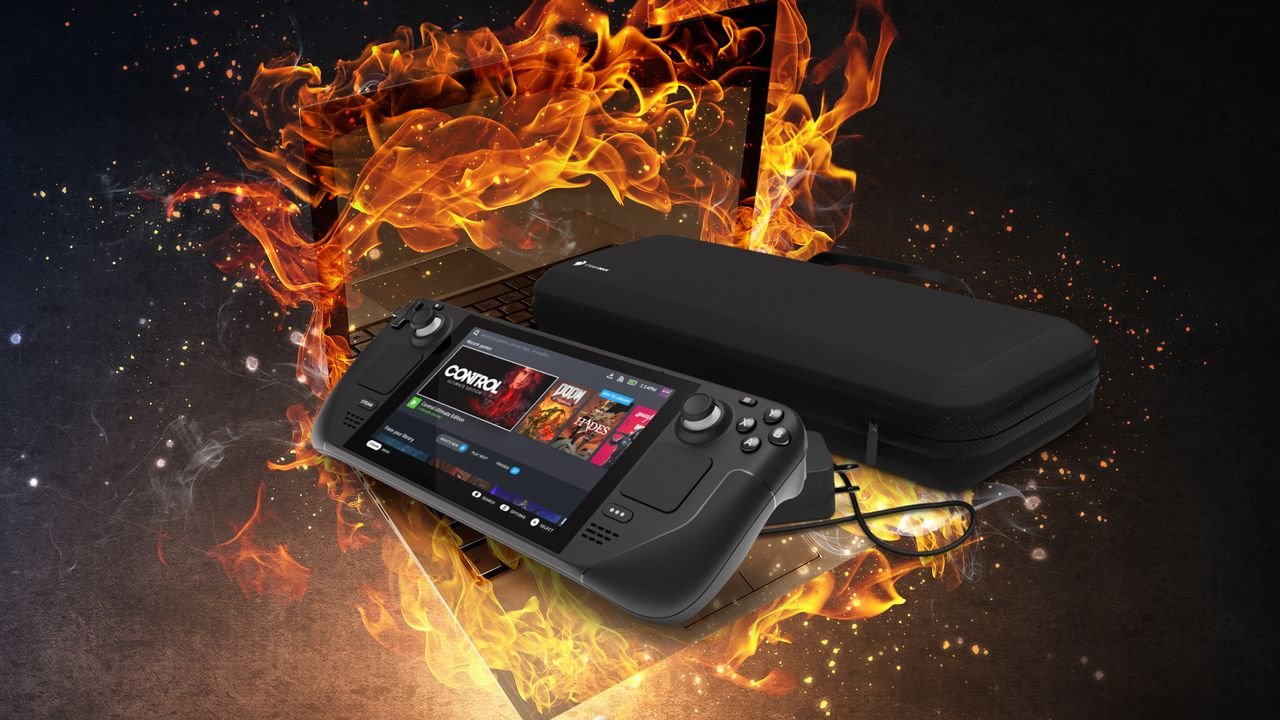- A new Steam Deck OLED hardware mod upgrades RAM from 16GB to 32GB
- SlickBuys Mods and Repairs showcases a tutorial on how the process works
- It involves soldering and BIOS programming, not meant for beginners
Valve’s Steam Deck has undergone numerous upgrades on both hardware and software levels, with unofficial mods like Decky Loader, and, of course, the Steam Deck OLED, which offers a faster display and improved battery life. However, there is an unofficial hardware mod that I’d suggest staying away from, unless you know what you’re doing.
As reported by VideoCardz, the Steam Deck OLED’s RAM can now be upgraded to 32GB from 16GB, thanks to SlickBuys Mods and Repairs, who showcased the process in a YouTube video (available below).
The modification is intended to improve in-game performance, with more memory allocated to games, ultimately reducing stutters and frame rate drops in certain games. However, it’s an extremely delicate process that I would not recommend attempting unless you’re familiar with soldering and BIOS modifications.
You’d also need to find and buy a 32GB memory chip that’s suitable for the OLED model, which is costly, as the one SlickBuys Mods and Repairs uses in the video costs $110 (around £82 / AU$170).
Then, you’ll need to remove the original chip and solder the new one. Perhaps the worst aspect of this is that it requires a firmware block, meaning you won’t ever be able to update your Steam Deck, as doing so will wipe settings and revert RAM to 16GB.
I think reading that alone should be enough to deter most of you from even attempting the process. It’d be much easier to go and buy a new handheld entirely, like the Asus ROG Ally X, than risk destroying your handheld for good.
Fortunately, if you are interested, the service can be done via SlickBuys Mods and Repairs, but it’s worth noting that it’s not available just yet, and it will likely be expensive.
Analysis: Please, don’t do this… just buy a new handheld

I’m sure I won’t be the first one to warn you against doing this, as it’s very easy for something to go wrong during this process, unless you’re well-versed when it comes to soldering and BIOS programming. Even if you are (or have it done via a service), it’s still too early to see how this will operate long-term in terms of thermals and battery life.
You could miss out on new and important SteamOS updates in the future. It doesn’t mean you can never upgrade your Steam Deck again, but just be ready to repeat the BIOS programming process again afterwards.
I’ve been very critical of recent high handheld prices, but I’d still choose buying new over this. After all, I don’t think the upgrade is significant enough to warrant taking the risk, as it only really applies to specific situations or games that need more RAM for better frame rates or frame-time stability.
There’s no sign of a Steam Deck successor releasing any time soon, despite recent rumors, but I’d advise either sticking with your OLED model or taking the leap towards the new Lenovo Legion Go S.
You might also like…
This articles is written by : Nermeen Nabil Khear Abdelmalak
All rights reserved to : USAGOLDMIES . www.usagoldmines.com
You can Enjoy surfing our website categories and read more content in many fields you may like .
Why USAGoldMines ?
USAGoldMines is a comprehensive website offering the latest in financial, crypto, and technical news. With specialized sections for each category, it provides readers with up-to-date market insights, investment trends, and technological advancements, making it a valuable resource for investors and enthusiasts in the fast-paced financial world.
